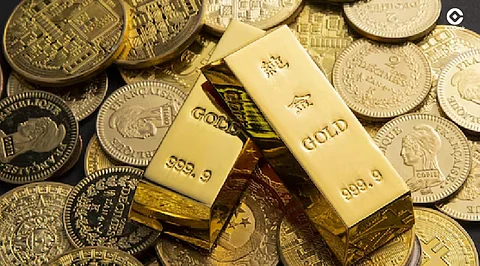

In an era of rising geopolitical tensions, inflationary spikes, interest rate swings, and unpredictable market cycles, investors are increasingly turning back to the age-old safe havens: commodities. In particular, gold and oil continue to dominate portfolios not just as physical assets, but as strategic hedges against financial instability and economic uncertainty.
As global markets face disruptions in 2025, from conflicts in Eastern Europe to supply chain shocks in Asia, these hard assets are more than just traditional stores of value. They are becoming active tools for portfolio diversification, risk management, and long-term wealth protection.
Gold has held its position as the ultimate safe-haven asset for centuries. In 2025, its relevance remains intact and perhaps even enhanced.
Inflation Hedge: With inflation resurging globally post-COVID, gold continues to act as a protective barrier against eroding currency value.
Currency Volatility: As fiat currencies fluctuate against each other, gold remains stable and universally valued.
Geopolitical Insurance: During times of war, conflict, or political uncertainty, gold prices often spike as investors seek refuge from market risk.
Gold ETFs (like SPDR Gold Shares, Nippon India Gold ETF)
Sovereign Gold Bonds (SGBs) in India
Digital gold and fractional investments in fintech apps
With central banks increasing gold reserves, especially in emerging economies, the demand remains structurally strong.
Crude oil may not be as "safe" as gold, but it is essential to the global economy, and that gives it immense strategic value.
Energy Dependence: Despite growth in renewables, the world still runs largely on oil—transport, logistics, and manufacturing rely heavily on it.
Supply Chain Shocks: Geopolitical events like OPEC decisions or regional conflicts can immediately spike oil prices, creating opportunities for traders.
Inflation Link: Oil prices directly influence inflation, making them a critical macroeconomic indicator.
Oil futures and options (for advanced traders)
Energy sector ETFs (like U.S. Energy Select Sector SPDR Fund)
Shares of oil giants like Reliance, ONGC, ExxonMobil, or Shell
In 2025, oil’s role is also expanding due to energy security concerns, especially in Europe and parts of Asia, where governments are stockpiling crude.
In financial terms, a "hedge" is an investment that reduces the overall risk of your portfolio. Commodities—especially gold and oil—often move inversely to equities and bonds during crises, making them powerful counterweights in times of uncertainty.
Low correlation to traditional assets
High liquidity in global markets
Strong demand from both institutional and retail investors
Tangible intrinsic value
When stocks crash due to a recession or geopolitical event, commodities tend to hold—or even rise—in value, cushioning the impact on portfolios.
While commodities offer protection, they are not risk-free:
Volatility: Oil prices can swing wildly in short periods.
Storage/Physical Risks: Physical gold or oil requires secure storage or infrastructure.
No Yield: Unlike stocks or bonds, commodities don’t pay dividends or interest.
Government Regulation: Price controls, taxes, or trade restrictions can affect returns.
The key is to balance your exposure and use commodities to complement other asset classes, not replace them.
With global economies walking a tightrope between recovery and recession, commodities offer a layer of defense. A diversified strategy that includes:
5–15% gold allocation
Exposure to oil-linked instruments
Tactical entry during dips or geopolitical flare-ups
…can help investors stay resilient in a shaky macro environment.
In 2025, gold and oil are more than just commodities—they're strategic assets in an increasingly uncertain world. While crypto and tech stocks capture headlines, commodities offer the kind of steady, grounded protection that every balanced portfolio needs. As volatility becomes the new normal, smart investors aren’t running—they’re hedging. And gold and oil are leading the way.